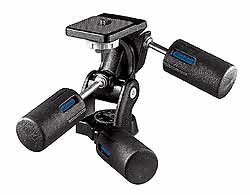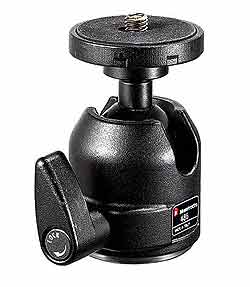Contact Details: Scotch Macaskill, Dirt Road Traders, Currys Post Road, Howick, KwaZulu-Natal, South Africa. Tel: +27 (0)82 578 2329. Privacy: Your privacy is guaranteed. See our Privacy Policy for more. This site accepts advertising and other forms of compensation - see Disclosure and Advertising for details. Site updated: 2022. Copyright © 2002 - 2022 Scotch Macaskill
 |
||||||||||
|
||||||||||
|
SEE ALL |
Why Use a Camera Tripod?Camera tripods are a necessity for anyone who wants to take the best pictures possible. They are useful for many different situations by helping to minimize camera movement which can cause an image to blur. Blurring is especially noticeable in photographs taken with slow shutter speeds (under low-light conditions, for example) and becomes more apparent when photographs are enlarged. Telephoto lenses, because they are essentially enlarging the image before it's recorded by the camera, will also accentuate any camera movement. Even slight motion of the camera, when using either a slow shutter speed or a telephoto lens, can cause unacceptably fuzzy photographs. Supporting the camera can help to reduce camera movement and ensure sharp photos. This applies equally to traditional film cameras and digital cameras. A tripod provides the best support, but cameras can also be stabilized with objects such as doorframes or tree trunks. Monopods are suitable for outdoor use when tripods are either too heavy or too cumbersome to set up. Broad Range of Prices Each tripod has three heights which must be considered -- maximum, minimum, and collapsed. For most purposes, the maximum height should allow you to use the camera at a comfortable standing position. You rarely need a tripod higher than this. If you do a lot of close-up work, the minimum height is an important measurement, although extensions can be added to the head which allow the camera to be brought close to the base of the tripod. Finally, the collapsed height is important to determine the tripod's portability -- compact tripods are usually easier to carry around. Tripods usually have a center column to attach the tripod head. This center column can be used for fine height adjustment and some models allow the camera to be tilted down towards the ground for closeup work. Look for a center column with a hook – these can be used to hang heavy objects for increased stability. Pan and Tilt Traditional heads are the three-way pan tilt type. They have three different axes and each is controlled with its own mechanism and lock. The locking mechanisms make this type of head ideal for situations where precise control of the visual field is needed, but can be inconvenient for other uses. Ball heads allow all three axes to be set at the same time, so they are easier to use. They are also more expensive but most photographers gladly accept the higher price for the increased flexibility in camera movement.
Ideal Alternative Using a monopod is almost as easy as pointing and shooting. The monopod gives the camera the extra stability necessary for good quality shots. When photographing wildlife from inside a vehicle, a "beanbag" is a useful alternative for keeping the camera steady. At its most basic, a beanbag is simply a sealed fabric bag filled with dry beans or rice. You can place the beanbag on the vehicle window sill, or even on the edge of a partially opened window, and then "bed" the camera on the beanbag. This will provide much more stability than placing the camera directly on the sill or window. Carrying a tripod is easier with a case or a carrying strap. Cases can be used to hold all your camera equipment but are bulky to carry around. If you don't have a lot of equipment a shoulder strap is the best solution for carrying the tripod. If the camera needs to be perfectly level, small bubble levels can be attached to the tripod. Some tripods come equipped with levels, but they are also available as inexpensive accessories. Return to Photo Info page for more photography articles. |
|||||||||
|
|
||||||||||

